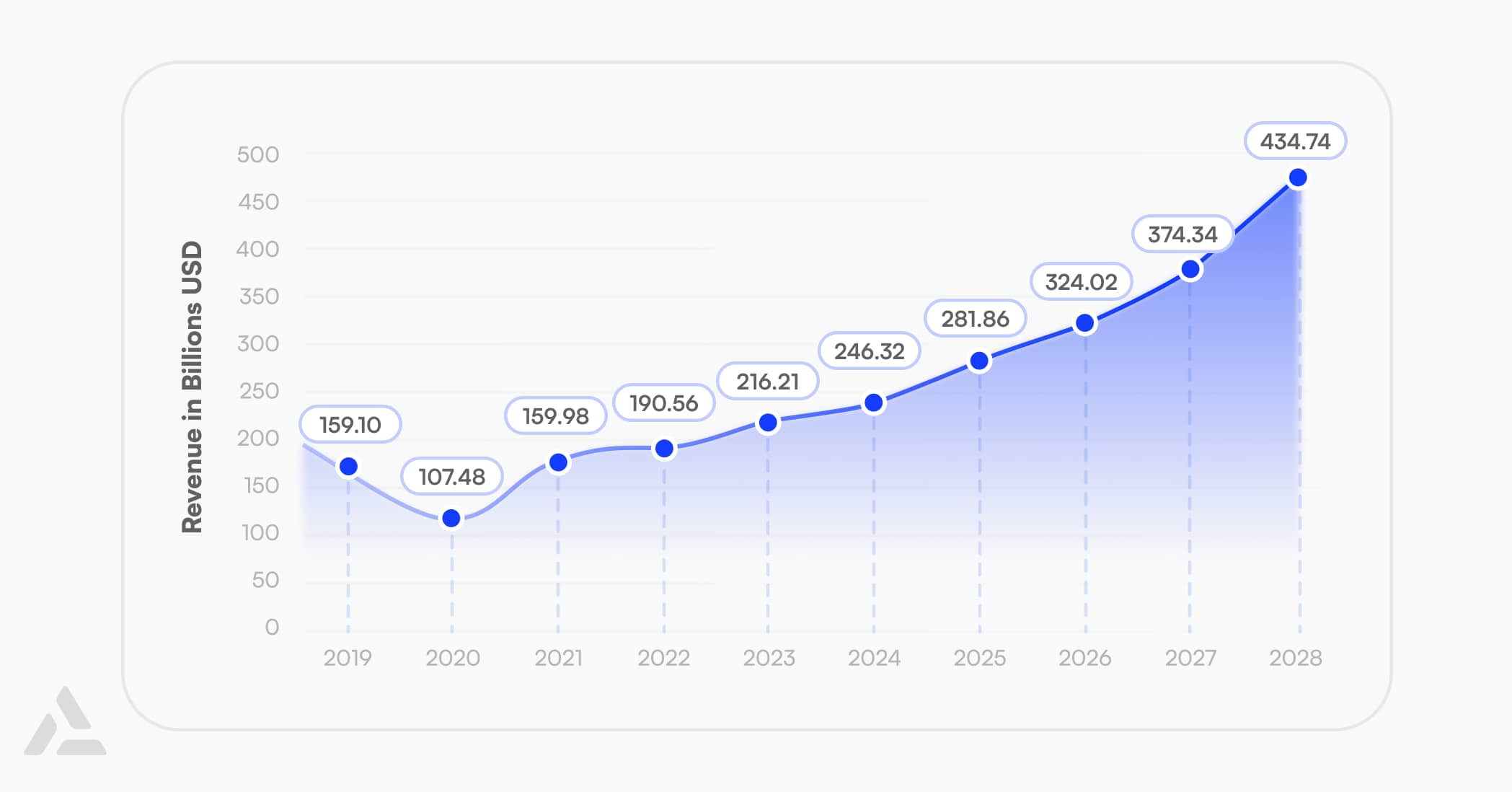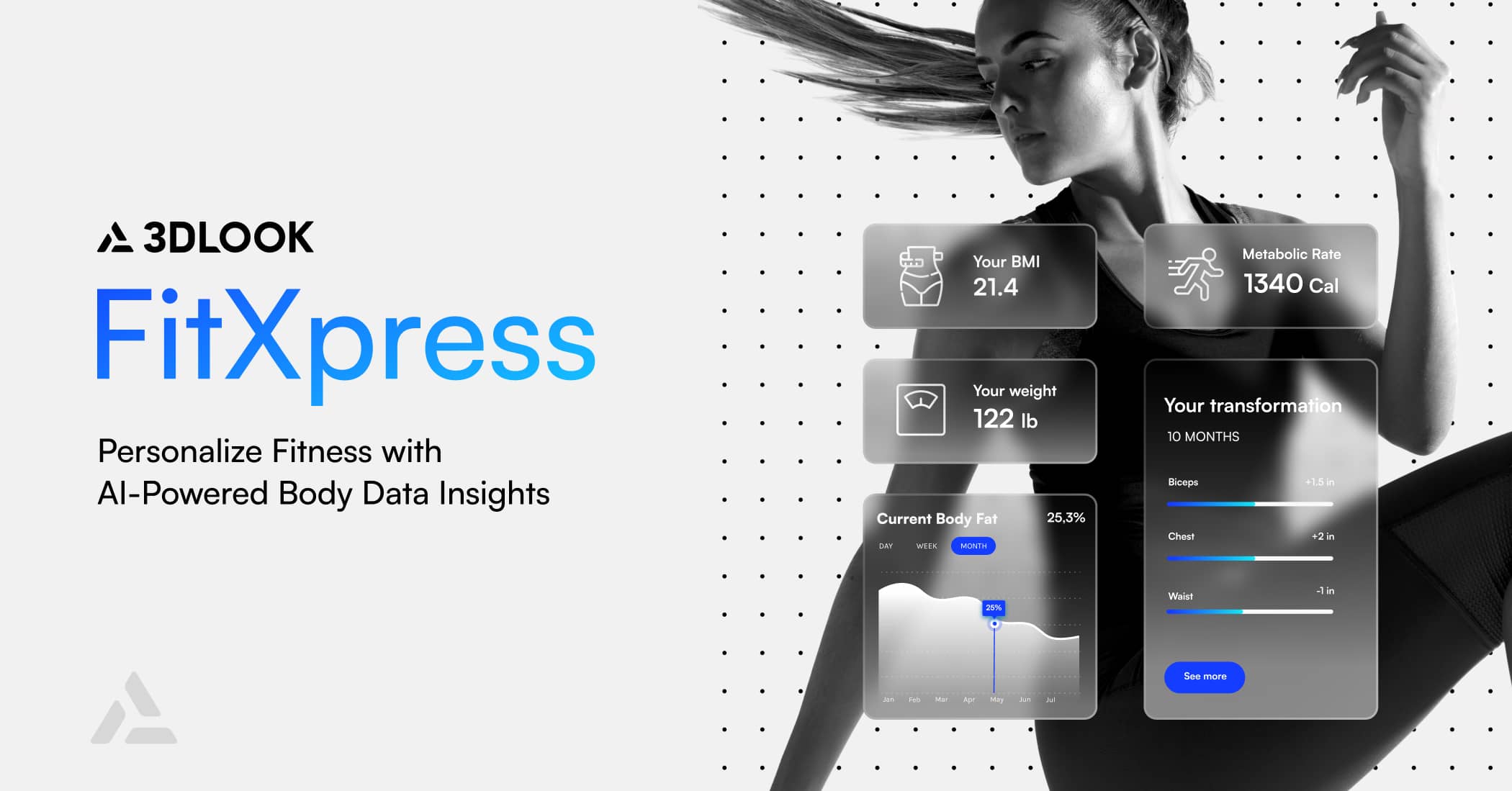From immersive workouts to hybrid models that blend in-person sessions with digital platforms, the fitness industry has made personalized experiences its top priority. The growing trend of delivering unique experiences is expected to merge with sustainability initiatives, as an increasing number of consumers look for eco-friendly options.
The fitness industry has been driven by advancements in technology, evolving consumer demands, and a growing emphasis on holistic wellness. The global fitness market is projected to reach $434.74 billion by 2028, reflecting a significant shift in how individuals approach health and exercise. Several key trends are shaping the future of fitness, offering exciting opportunities for both businesses and fitness enthusiasts alike.
Introduction
Today, fitness is no longer all about sweat and squats. Fitness has been evolving fast, going from lifting heavy things to virtual yoga in the living room and fitness apps that double as one’s personal cheerleader.
But it doesn’t stop there. In the future, fitness and wellness will likely focus on AI trainers and immersive workout experiences that perfectly simulate a run on a pristine beach or uphill hiking.
Here is a rundown of emerging trends and future projections in the fitness industry.
The Evolution of the Fitness Industry
From Ancient times, fitness was a key part of everyday life for Greeks and Romans. People needed to stay fit to fight, protect themselves from predators, and survive. Thus, boys and men were expected to train hard, doing exercises like running, lifting, and learning to use weapons.
Fast forward to the 1980s, and fitness went mainstream. Health clubs became popular, with women in legwarmers flooding in to lift weights and take part in energetic aerobic dance classes.
By 2010, fitness began shifting away from traditional gyms. Bootcamp sessions, Zumba, and boxing classes gained popularity. Boutique studios popped up, and more people became interested in personal training and functional workouts.
It didn’t take long for fitness technology and apps to gain traction and advance rapidly. What began as simple step counters evolved into smart devices that track everything from heart rate to sleep patterns, providing users with a full picture of their health.
The Growth of the Fitness Industry
In terms of numbers, the fitness industry has seen significant growth and transformation over the years, with growth estimations of nearly 7.5% annually between 2022 and 2030. Today, gyms and health clubs are still the largest segment, covering 39% of the fitness industry. But they’re closely followed by trackers and wearables that have been increasingly popular.
The demand for online fitness training and apps has surged, especially during and after COVID-19.
How COVID-19 Reshaped Fitness Habits
The COVID-19 pandemic has drastically altered health and fitness routines, influencing various aspects of how people stay active.
With gyms closed during lockdowns, many individuals adopted home workout routines.
This resulted in a notable rise in the use of online fitness platforms, mobile apps, and purchases of home gym equipment.
Apps like Strava, for instance, reported an average of two million new users each month in 2020. Freeletics also experienced a notable 50% spike in usage during the initial lockdown period.
On a global scale, downloads of health and fitness apps jumped by 46%, with countries like India witnessing a staggering 156% growth. This surge was fueled by the demand for convenient, at-home workout options and the desire to remain engaged with fitness communities through digital platforms.
Additionally, the pandemic underscored the importance of mental well-being, leading to a surge in the use of meditation and mindfulness apps.
People also sought safe, socially distanced options, which led to outdoor activities like walking, running, and cycling to gain popularity. According to Leisure Opportunities, 1 out of 4 people began working out consistently at home during the lockdowns.

As restrictions lifted, a blend of home and gym-based workouts became the norm. People now value the flexibility of at-home exercise alongside the social interaction and motivation provided by gyms.
How Much is the Fitness Industry Worth?
Globally, the fitness industry is estimated to be worth $257 billion in 2025, with significant growth that’s driven by people’s increasing interest in health and wellness along with convenient and intuitive tech integrated into fitness routines.
Yet, the fitness industry saw a 32.45% decline in revenue in 2020 due to the pandemic. But despite this decline, the fitness market started to recover strongly, with forecasts projecting it will reach $434.74 billion by 2028—a 171.75% increase from 2021 levels. In the future, two key segments are anticipated to capture a growing share of the fitness industry after COVID-19:
- Fitness trackers: the segment is projected to expand from a 16% market share in 2019, representing $25.6 billion in revenue, to 26% by 2028, generating $114.3 billion.
- Digital fitness: this area is expected to grow significantly, rising from a 4% market share in 2019 ($6.1 billion in revenue) to 18% by 2028, with revenues reaching $79.3 billion.
These projections highlight the shifting landscape and the increasing role of technology in the fitness business sector.

Emerging Trends in the Fitness Industry
The key trends that dominate the fitness industry in 2025 include:
Wearable tech
Smartwatches and fitness trackers remain in high demand, offering users real-time data on metrics such as activity levels, heart rate, and sleep quality. These connected devices enable users to monitor their health and make informed decisions about their fitness routines.
Popular examples of wearables and their advanced capabilities include Apple Watch, Garmin, and Whoop.
The Apple Watch, for instance, tracks heart rate, ECG, blood oxygen levels, and sleep quality. It supports a wide range of exercises, including swimming, cycling, and yoga.
Garmin Forerunner 265 provides detailed running metrics, VO2 max, and performance data. The smartwatch also monitors heart rate, sleep patterns, and Body Battery energy levels.
Whoop, on the other hand, is more recovery-oriented as it monitors sleep, strain, and recovery to help improve performance. Its health metrics cover heart rate variability (HRV) and respiratory rate monitoring and also offers tailored recommendations based on user data.
Biohacking for performance
Biohacking, which leverages scientific and technological advancements to optimize physical and mental performance, is gaining momentum. Popular methods include intermittent fasting, cognitive enhancers (nootropics), and even implantable devices that track key health indicators.
Growth of home gyms
The convenience of at-home exercise has fueled the expansion of home gym setups, ranging from simple equipment like resistance bands to more advanced systems and interactive fitness platforms that offer live or on-demand classes.
Rise of mobile fitness apps
Fitness apps provide users with customized workout plans, progress tracking, and even virtual coaching, making fitness easily accessible for smartphone users. Fitness app companies cater to a variety of fitness levels and goals, offering flexible options for everyone.
This includes apps that focus on weight loss, such as FitXpress. This app uses advanced body scanning technology and provides users with detailed body measurements and personalized fitness insights. It offers accurate assessments of body composition, including calculations of metabolic rate and BMI for obesity analysis.
Functional fitness on the rise
Functional fitness, which focuses on movements that simulate daily activities to build strength and mobility, is gaining popularity. It is becoming a preferred choice over high-intensity interval training (HIIT) for those looking for sustainable, well-rounded exercise routines.
Integration of mental health in fitness
Recognizing the link between mental and physical health, fitness routines increasingly incorporate practices such as meditation and mindfulness. This integration highlights the growing awareness of mental well-being in overall fitness.
Flexibility of hybrid fitness models
Hybrid fitness models blend in-person and digital experiences, allowing individuals to switch between attending physical gym sessions or joining virtual classes from home. This approach offers greater flexibility and convenience.
Emphasis on recovery tools
Recovery has become a key focus for many, with tools like foam rollers, massage guns, and compression garments becoming mainstream. These products help alleviate muscle soreness, improve circulation, and prevent injury.
Fitness programs for older adults
As the population ages, the demand for fitness programs tailored to older adults is rising. These programs emphasize strength, mobility, and overall wellness, helping older adults maintain an active and healthy lifestyle.
Discover how AI-powered body data is revolutionizing health, fitness, and weight management, setting a new standard for personalization and progress tracking.
The Future of the Fitness Industry
The future of fitness lies in creating unique, individualized experiences that cater to the specific goals and preferences of each user. Additionally, holistic health approaches and the integration of sustainability practices will also likely be key trends.
Examples include:
Eco-conscious fitness solutions
As environmental awareness grows, there is an increasing interest in sustainable fitness practices. This shift is reflected in the use of energy-efficient gym machines, workout gear made from recycled or renewable materials, and fitness centers adopting strategies to minimize their environmental impact, like waste reduction and green energy usage.
Comprehensive health and well-being
Modern fitness programs are broadening their focus to include mental and emotional health, integrating practices like meditation, mindfulness, and stress relief into traditional exercise regimens. This holistic approach acknowledges that mental wellness is as essential as physical fitness for overall well-being.

On-demand fitness services
The rise of digital fitness platforms is making it easier for people to access workout routines, personalized fitness plans, and virtual trainers at their convenience. These platforms offer flexibility by allowing users to engage in fitness sessions anytime and anywhere, catering to a wide range of fitness levels and schedules.
Workplace fitness initiatives
More businesses are recognizing the benefits of promoting physical activity at work. This is being done through the installation of on-site fitness centers, promoting exercise breaks, or offering incentives for employees to stay active. These initiatives are designed to enhance productivity, reduce stress, and foster a healthier work environment.
Nature environments for mental wellness
An emerging trend in wellness is shinrin-yoku or “forest bathing,” where individuals spend mindful time in forested areas. This practice is gaining recognition for its calming effects and ability to improve mental health by reducing stress and encouraging relaxation through nature immersion.
A similar example is blue mind therapy, which focuses on the calming and restorative effects of water environments for mental wellness. This practice involves spending time near oceans, lakes, rivers, or even pools, and leveraging the soothing presence of water to reduce stress, improve mood, and enhance mindfulness.

The Future of Technology in the Fitness Industry
AI-Driven Personalization
AI and machine learning are transforming the fitness industry, offering customized, data-driven solutions that adapt to individual needs. AI-driven fitness solutions leverage vast amounts of data, enabling real-time adjustments and smarter recommendations than generic workout plans.
One notable example is Fitbod, which uses machine learning algorithms to tailor exercise routines based on a user’s goals, previous workouts, and equipment availability.
Another trend is AI personal trainers, like Aaptiv Coach, which provides audio-guided workouts that adapt to a user’s performance and feedback in real time. These trainers can learn from each session, providing customized advice to maximize results while preventing injuries.
Moreover, AI is increasingly used in wearable fitness technology, For example, Oura Ring monitors sleep, recovery, and daily activity levels, offering recommendations to optimize fitness routines and overall well-being.
FitXpress uses AI to transform two user-provided photos into a detailed 3D body model. This process involves capturing over 80 body measurements with high accuracy, which can be done in as little as 45 seconds.
FitXpress leverages AI to utilize BMI results effectively, providing a motivational tool for users to reach their health goals. The AI technology enables benchmarking of fitness results, providing a comprehensive view of progress over time, which can be compared on a weekly or monthly basis.
Immersive Workouts Through AR and VR
Virtual reality (VR) can immerse users in diverse settings, such as a tranquil beach or a lively cityscape, enhancing the overall workout experience. With such dynamic environments, VR helps break the routine and keeps users motivated by providing an engaging alternative to traditional exercise.
Both augmented reality (AR) and VR will transform fitness routines into interactive gaming experiences, where users can compete in virtual races, tackle obstacle courses, or engage in fitness challenges.
Additionally, VR can deliver personalized training sessions through virtual coaches who provide real-time feedback and guidance, ensuring proper form and safety during exercises. Yet, these technologies can also be used for a gym-like experience at home.
NFT and Web3 Technologies
NFT and Web3 technologies are set to bring significant changes to the fitness industry, offering new ways to engage users and create value.
Some platforms have already started to develop Move-to-Earn (M2E) platforms, where fitness enthusiasts are rewarded with cryptocurrency for engaging in physical activities. For instance, users can earn tokens by running or walking.
Additionally, fitness clubs and platforms will likely leverage NFTs for exclusive memberships and provide entry to exclusive classes, events, or content, fostering a unique sense of belonging and community.
Final Thoughts
The global fitness industry is poised for significant growth in 2025 and beyond, driven by innovation and shifting consumer preferences. Key trends such as the rise of wearable fitness technology, the expansion of online and hybrid workout platforms, and the growing emphasis on personalized wellness solutions will continue to reshape the market.
These trends point towards a future where fitness is more accessible, personalized, and aligned with overall well-being.







